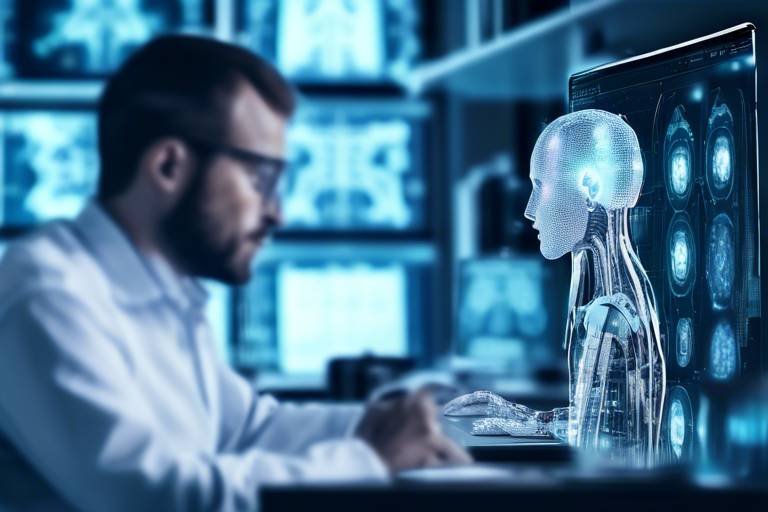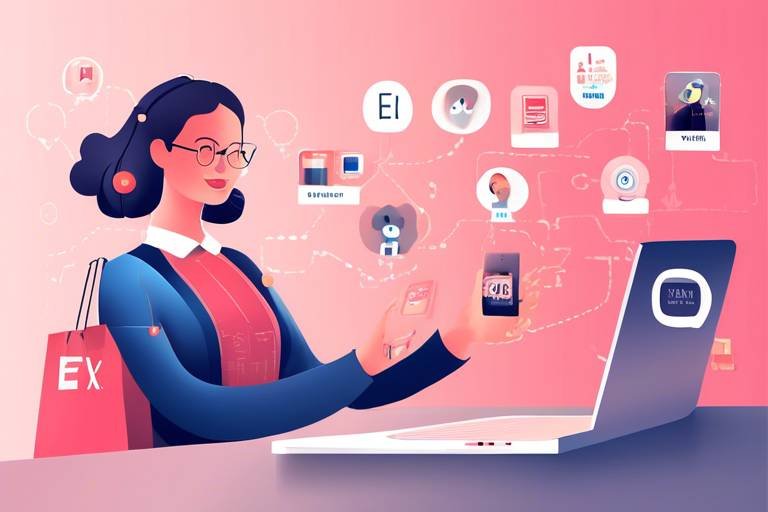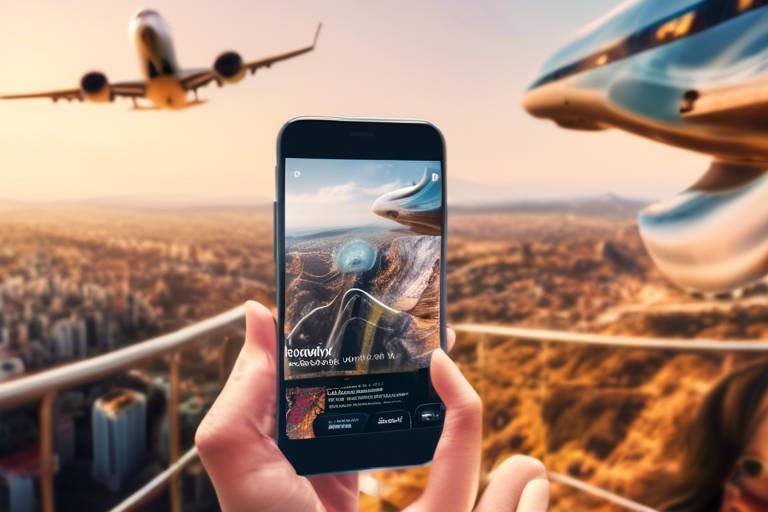The Future of Health Monitoring Technologies
The landscape of health monitoring technologies is undergoing a remarkable transformation, driven by rapid advancements in innovation and growing consumer demand for personalized healthcare. Imagine a world where your health is monitored continuously, seamlessly integrating into your daily life, allowing you to take charge of your well-being. This is not just a dream; it's becoming a reality as we explore the evolving technologies that are reshaping how we perceive and manage our health.
From wearable devices that track our every heartbeat to mobile applications that remind us to take our medications, the future of health monitoring is bright and full of possibilities. These innovations are not merely gadgets; they represent a paradigm shift in how we approach healthcare. By leveraging technology, we can achieve a level of health awareness that was previously unimaginable. Imagine having the power to detect potential health issues before they escalate, or to receive tailored advice based on real-time data about your body. This is the promise of modern health monitoring technologies.
Moreover, the integration of telehealth solutions is revolutionizing access to healthcare, especially for those in remote or underserved areas. Patients can now consult with healthcare professionals from the comfort of their homes, bridging the gap that once existed due to geographical barriers. This shift not only enhances convenience but also encourages individuals to engage more actively in their health journeys.
However, with great innovation comes great responsibility. As we embrace these technologies, we must also consider the challenges they present, including data privacy concerns and the need for regulatory compliance. Balancing the benefits of continuous health monitoring with the necessity of protecting personal health information is crucial. As we delve deeper into the specifics of these technologies, we will uncover both the exciting possibilities and the hurdles that lie ahead.
The emergence of new technologies in health monitoring is nothing short of revolutionary. Wearable devices, mobile health applications, and telehealth solutions are at the forefront of this transformation. Each of these innovations plays a vital role in reshaping how we track and manage our health. For instance, wearable devices such as smartwatches and fitness trackers provide real-time data that empowers users to make informed decisions about their health.
Additionally, mobile health applications are increasingly being utilized to monitor health conditions, manage medications, and facilitate communication between patients and healthcare providers. These applications not only enhance patient engagement but also foster a sense of community among users who share similar health journeys. As we continue to explore these technologies, we will uncover the profound impact they have on personal and public health.
Continuous health monitoring offers numerous advantages that can significantly improve health outcomes. By enabling early detection of health issues, these technologies empower individuals to seek timely medical intervention, reducing the risk of serious complications. Furthermore, personalized care becomes a reality as health monitoring technologies provide insights tailored to individual needs, fostering a more proactive approach to health management.
Ultimately, the benefits extend beyond the individual. Public health can also see improvements as aggregated data from health monitoring technologies can inform healthcare policies and resource allocation. This collective intelligence can lead to better health outcomes for entire communities, paving the way for a healthier future.
Despite their remarkable benefits, health monitoring technologies face several challenges that must be addressed to ensure their widespread adoption and effectiveness. One of the most pressing issues is data privacy and security. With the rise of digital health data, ensuring the privacy and security of personal health information has become a critical concern for users and developers alike. Trust is paramount; without it, individuals may hesitate to embrace these technologies fully.
Moreover, navigating the regulatory landscape is essential for health monitoring technologies to ensure they meet safety standards while fostering innovation in the healthcare sector. Striking a balance between rigorous regulations and the need for flexibility in innovation is key to advancing these technologies responsibly.
- What are health monitoring technologies? Health monitoring technologies refer to various devices and applications that track and manage health-related data, such as wearable devices, mobile apps, and telehealth solutions.
- How do wearable devices improve health monitoring? Wearable devices provide real-time data on vital signs, physical activity, and sleep patterns, allowing users to take control of their health.
- What are the privacy concerns related to health monitoring technologies? Data privacy concerns arise from the collection and storage of personal health information, making it essential to ensure robust security measures are in place.
- How can telehealth solutions enhance healthcare access? Telehealth solutions allow patients to consult healthcare professionals remotely, improving access to care, especially for those in underserved areas.

Emerging Technologies in Health Monitoring
The world of health monitoring is undergoing a seismic shift, driven by the rapid advancement of technology. Today, we’re witnessing a revolution where traditional methods of tracking health are being replaced by innovative solutions that empower individuals to take charge of their well-being. Imagine a future where your health data is not just numbers on a chart, but a dynamic representation of your lifestyle, habits, and overall health status. This is not just a dream; it’s happening now!
One of the most exciting developments in health monitoring is the rise of wearable devices. These gadgets, ranging from smartwatches to fitness bands, are designed to provide real-time insights into our health metrics. They track everything from heart rates and sleep patterns to physical activity levels, allowing users to monitor their health continuously. For instance, a smartwatch can alert you when your heart rate exceeds a certain threshold, potentially preventing serious health issues before they arise. It's like having a personal health assistant on your wrist!
Another game-changer is the emergence of mobile health applications. These apps have transformed the way we interact with our health data. With a few taps on your smartphone, you can manage medications, schedule appointments, and even communicate directly with healthcare providers. This level of accessibility not only enhances patient engagement but also fosters a collaborative approach to health management. Picture this: you’re sitting in a café, and with a quick glance at your app, you can see how well you’ve been sticking to your exercise routine or if you need to take your medication. It’s convenience at your fingertips!
Moreover, we cannot overlook the impact of telehealth solutions. Especially in the wake of the COVID-19 pandemic, telehealth has become a vital tool for healthcare delivery. Virtual consultations allow patients to connect with healthcare professionals without the need for physical visits. This not only saves time but also reduces the risk of exposure to illnesses. Telehealth is bridging the gap between patients and providers, ensuring that quality care is accessible regardless of geographical barriers.
As we delve deeper into these emerging technologies, we also uncover the fascinating concept of health monitoring clothing. Imagine wearing a shirt that can track your heart rate, respiration, and even stress levels, all without cumbersome devices attached to your body. This innovative clothing integrates sensors seamlessly, providing real-time data while you go about your daily activities. It’s like wearing your health on your sleeve—literally!
In summary, the convergence of wearable devices, mobile health applications, telehealth solutions, and health monitoring clothing is reshaping the landscape of personal health management. These technologies are not just tools; they are catalysts for a healthier future, allowing individuals to take proactive steps towards better health. As these innovations continue to evolve, they promise to enhance our understanding of health and wellness, leading to improved health outcomes for everyone.
- What are wearable devices? Wearable devices are gadgets that you can wear on your body, such as smartwatches and fitness trackers, designed to monitor various health metrics in real-time.
- How do mobile health applications work? Mobile health applications allow users to track their health data, manage medications, and communicate with healthcare providers directly through their smartphones.
- What is telehealth? Telehealth refers to the delivery of healthcare services through digital communication technologies, enabling patients to consult with healthcare professionals remotely.
- Are health monitoring technologies secure? While many health monitoring technologies prioritize data privacy and security, users should always be cautious and choose reputable devices and applications.

Benefits of Continuous Health Monitoring
In today's fast-paced world, the concept of continuous health monitoring is not just a trend; it's becoming a necessity. Imagine having the power to track your health metrics in real-time, almost like having a personal doctor by your side 24/7. This innovative approach is transforming how we perceive health management, making it more proactive rather than reactive. But what exactly are the benefits of this technology? Let’s dive in!
One of the most significant advantages of continuous health monitoring is the early detection of health issues. When health metrics are tracked regularly, even subtle changes can be identified before they escalate into serious problems. For instance, a slight increase in heart rate or a change in sleep patterns can indicate underlying conditions. This early warning system can lead to timely interventions, potentially saving lives. The ability to catch issues early is like having a smoke detector in your home; it alerts you before a small fire becomes a raging inferno.
Moreover, continuous health monitoring fosters personalized care. With data collected over time, healthcare providers can tailor treatment plans to fit individual needs. This personalized approach is akin to a custom-fit suit; it’s designed specifically for you, ensuring comfort and effectiveness. Instead of a one-size-fits-all solution, patients receive care that considers their unique health metrics, lifestyle, and preferences. This can lead to better adherence to treatment plans and improved health outcomes.
Another remarkable benefit is the enhancement of patient engagement. When individuals have access to their health data, they are more likely to take an active role in their health management. Think of it as having a fitness coach who not only provides guidance but also shares your progress in real-time. This engagement can lead to healthier lifestyle choices, as users become more aware of how their daily habits affect their overall health. For example, someone might decide to increase their physical activity after seeing how their steps correlate with their mood and energy levels.
To illustrate the impact of continuous health monitoring, consider the following table that outlines some key benefits:
| Benefit | Description |
|---|---|
| Early Detection | Identifies health issues before they become serious problems. |
| Personalized Care | Tailors treatment plans based on individual health data. |
| Improved Patient Engagement | Encourages active participation in health management. |
| Convenience | Allows health monitoring from the comfort of home. |
Additionally, the convenience factor cannot be overlooked. Continuous health monitoring allows individuals to keep track of their health from the comfort of their homes, eliminating the need for frequent doctor visits. It's like having a gym at home; you can work out whenever you want without the hassle of traveling to a facility. This convenience is particularly beneficial for those with mobility issues or those living in remote areas where access to healthcare can be limited.
In conclusion, the benefits of continuous health monitoring are vast and transformative. From early detection of health issues to personalized care and improved patient engagement, these technologies empower individuals to take charge of their health like never before. As we continue to embrace these innovations, the future of health monitoring looks bright, promising a healthier tomorrow for everyone.
- What is continuous health monitoring?
Continuous health monitoring refers to the ongoing tracking of health metrics, such as heart rate, physical activity, and sleep patterns, using advanced technologies like wearable devices and mobile applications. - How does continuous health monitoring help with early detection?
By regularly analyzing health data, subtle changes can be detected early, allowing for timely medical interventions before conditions worsen. - Can continuous health monitoring improve patient engagement?
Yes! When patients have access to their health data, they are more likely to take an active role in managing their health, leading to better outcomes. - Are there any privacy concerns with health monitoring technologies?
Yes, data privacy and security are critical concerns. It's essential for users to choose reputable devices and applications that prioritize the protection of personal health information.

Wearable Devices
The advent of has truly transformed the landscape of health monitoring. Imagine having a personal health assistant that fits snugly on your wrist or even under your clothing, constantly keeping an eye on your vital signs and daily activities. These innovative gadgets are not just a trend; they represent a significant leap forward in how we manage our health on a daily basis. From smartwatches to fitness trackers and even health-monitoring clothing, these devices are empowering users to take charge of their well-being like never before.
One of the most exciting aspects of wearable technology is its ability to provide real-time data. This means that users can monitor their heart rate, physical activity levels, and even sleep patterns continuously. For instance, a smartwatch can alert you if your heart rate exceeds a certain threshold during a workout, helping you to avoid overexertion. Similarly, fitness trackers can remind you to get up and move if you’ve been sedentary for too long, acting as a gentle nudge towards a more active lifestyle.
The integration of sensors in these devices has made it possible to gather a wealth of health data effortlessly. For example, many smartwatches now come equipped with sensors that can track not only your steps but also your blood oxygen levels and even your stress levels. This data can be invaluable for users looking to understand their health better and make informed decisions. As the saying goes, "knowledge is power," and in this case, the more you know about your body, the better equipped you are to take care of it.
Furthermore, wearable devices often come equipped with companion mobile applications that enhance their functionality. These apps can help users set health goals, track progress, and even share data with healthcare providers. The ability to easily communicate this information can lead to more personalized care and better health outcomes. For instance, imagine being able to share your fitness data with your doctor during a check-up, allowing them to tailor their advice specifically to your lifestyle and health metrics.
However, while the benefits are substantial, it's essential to recognize that not all wearable devices are created equal. Some may offer advanced features and accurate readings, while others might fall short. Users should look for devices that are FDA-approved or have undergone rigorous testing to ensure reliability. As the market continues to expand, consumers must be discerning to choose the right device that meets their health needs.
In conclusion, wearable devices are not just gadgets; they are tools that can significantly enhance our ability to monitor and manage our health. By providing real-time insights and facilitating better communication with healthcare providers, these technologies empower users to take proactive steps towards achieving their health goals. As we move forward, it's exciting to think about how these devices will continue to evolve and improve, making health monitoring more accessible and effective for everyone.

Smartwatches and Fitness Trackers
Smartwatches and fitness trackers have taken the world by storm, transforming the way we monitor our health and fitness. These sleek, stylish devices are not just fashion statements; they are powerful tools that empower users to take charge of their well-being. Imagine having a personal health assistant right on your wrist, constantly tracking your heart rate, counting your steps, and even monitoring your sleep patterns. It's like having a mini doctor with you at all times!
One of the most appealing aspects of smartwatches and fitness trackers is their ability to provide real-time feedback. When you go for a jog, your device can show you how many calories you've burned, your pace, and even your heart rate. This immediate data allows you to adjust your workout on the fly, ensuring that you’re maximizing your efforts. Furthermore, many of these devices come equipped with features that encourage you to stay active throughout the day. For example, if you've been sitting for too long, your smartwatch might gently remind you to get up and move around. It’s like having a personal trainer that nudges you toward healthier habits!
But the benefits don’t stop there. Smartwatches and fitness trackers often integrate seamlessly with mobile health applications, allowing users to track their progress over time. You can log your workouts, set goals, and even share your achievements with friends and family. This social aspect can be incredibly motivating. After all, who doesn’t love a little friendly competition? Many devices also allow users to sync their data with healthcare providers, enabling a more personalized approach to health management.
However, it’s essential to choose the right device that fits your lifestyle. With so many options available, it can be overwhelming. Here’s a quick comparison of some popular smartwatches and fitness trackers:
| Device | Key Features | Price Range |
|---|---|---|
| Apple Watch Series 7 | Heart rate monitor, ECG, GPS, sleep tracking | $399 - $749 |
| Fitbit Charge 5 | Stress management, heart rate tracking, built-in GPS | $179.95 |
| Samsung Galaxy Watch 4 | Body composition analysis, sleep tracking, fitness tracking | $249.99 - $349.99 |
| Garmin Venu 2 | Health snapshot, GPS, advanced sleep tracking | $399.99 |
In conclusion, smartwatches and fitness trackers are not just gadgets; they are gateways to a healthier lifestyle. They provide us with the data we need to make informed decisions about our health and fitness, ultimately leading to improved well-being. So, if you haven’t already, it might be time to consider investing in one of these innovative devices. Your future self will thank you!
- Q: Can I use a smartwatch without a smartphone?
A: Many smartwatches have standalone features, but most are designed to work best when paired with a smartphone. - Q: Are fitness trackers waterproof?
A: Many fitness trackers are water-resistant or waterproof, but it's essential to check the specifications of each model. - Q: How accurate are the health metrics provided by these devices?
A: While smartwatches and fitness trackers provide valuable insights, they may not always be 100% accurate. It's best to use them as a guide rather than a definitive source of health information.
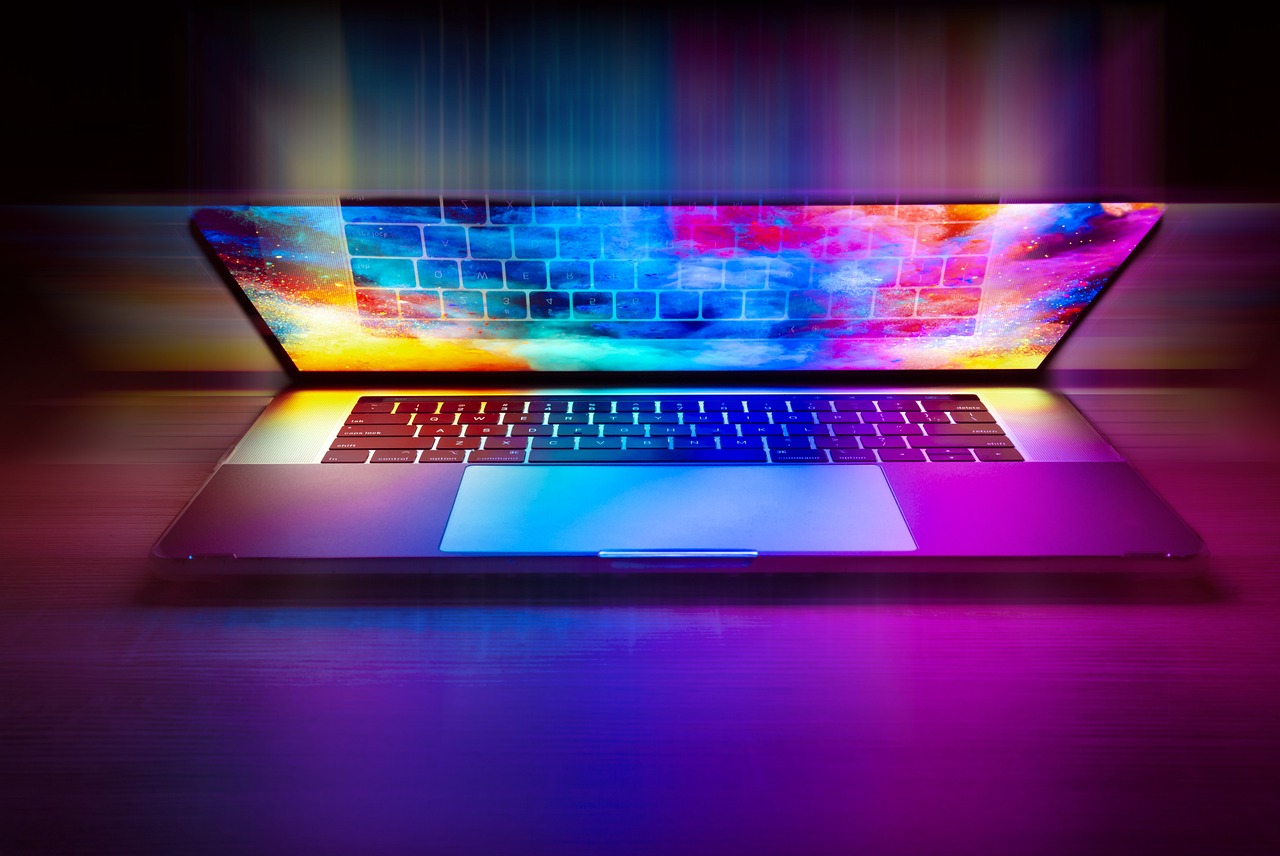
Health Monitoring Clothing
Imagine wearing a shirt that not only keeps you warm but also tracks your heart rate, breathing patterns, and even your body temperature. is at the forefront of this revolution, seamlessly integrating technology into our everyday attire. These innovative garments are designed with built-in sensors that provide real-time data about your body's performance, making health tracking as simple as getting dressed in the morning. As we delve deeper into this fascinating world, it's essential to understand how these smart fabrics work and the profound impact they have on personal health management.
One of the most exciting aspects of health monitoring clothing is its versatility. From athletic wear to everyday outfits, these garments cater to a wide range of users. For instance, athletes can benefit from specialized clothing that tracks their performance metrics during training sessions, while everyday users can wear smart shirts or leggings that help monitor their health throughout the day. This means that whether you're hitting the gym or simply going about your daily routine, you can keep an eye on your health without any extra effort.
What makes health monitoring clothing truly remarkable is the technology that powers it. These garments often use conductive fibers and advanced sensors that can detect physiological signals. The data collected is then transmitted to a paired mobile application, allowing users to visualize their health metrics in real-time. This integration of technology not only makes health monitoring more accessible but also encourages users to take an active role in their health journey. Imagine receiving alerts on your phone if your heart rate exceeds a certain threshold during a workout—this is the kind of proactive health management that these smart clothes enable.
Moreover, the potential applications of health monitoring clothing extend beyond personal use. In clinical settings, healthcare providers can utilize this technology to monitor patients remotely, allowing for timely interventions and reducing the need for frequent hospital visits. This approach can be particularly beneficial for patients with chronic conditions who require ongoing monitoring. By wearing specially designed clothing, patients can provide their doctors with continuous data, leading to more informed treatment decisions.
However, as with any emerging technology, there are challenges to consider. The accuracy of the sensors in health monitoring clothing can vary, and ensuring that the data collected is reliable is crucial for effective health management. Additionally, while the idea of wearing technology sounds appealing, issues such as comfort, style, and durability must also be addressed to encourage widespread adoption. After all, who wants to wear something that feels uncomfortable or looks unappealing?
In conclusion, health monitoring clothing represents an exciting frontier in the realm of personal health management. By merging fashion with technology, these garments empower users to take control of their health in a way that is both practical and unobtrusive. As technology continues to evolve, we can only anticipate more innovative solutions that will further enhance our ability to monitor and manage our health effectively.
- What types of health metrics can be monitored with these clothes? Health monitoring clothing can track various metrics, including heart rate, body temperature, and even respiratory rate.
- Are health monitoring clothes comfortable to wear? Yes, many designs prioritize comfort and style, ensuring that users can wear them throughout the day without discomfort.
- How accurate are the sensors in health monitoring clothing? While many sensors provide reliable data, accuracy can vary by manufacturer and model. It's essential to choose reputable brands.
- Can these clothes be used in clinical settings? Absolutely! Health monitoring clothing can be valuable in clinical environments for remote patient monitoring.

Mobile Health Applications
In today's fast-paced world, have emerged as a game-changer in the realm of health monitoring. These apps are not just a trend; they are transforming the way individuals manage their health. Imagine having a personal health assistant right in your pocket, ready to provide you with insights and reminders at a moment's notice. Sounds incredible, right? These applications allow users to track various health metrics, from daily activity levels to medication adherence, all while fostering a seamless communication channel between patients and healthcare providers.
One of the most significant advantages of mobile health applications is their ability to provide real-time data. Users can monitor their heart rate, blood pressure, and even glucose levels with just a few taps on their smartphones. This immediacy not only empowers users but also facilitates timely interventions when necessary. For instance, if a user’s heart rate spikes unexpectedly, the app can alert them to seek medical advice, potentially preventing serious health issues.
Moreover, mobile health apps come equipped with features that promote personalized care. They can analyze user data and provide tailored recommendations based on individual health goals. Whether it’s suggesting a workout plan, reminding users to take their medications, or offering dietary advice, these applications adapt to the user's lifestyle and needs. This level of personalization is akin to having a customized health coach available 24/7.
However, the benefits of mobile health applications extend beyond individual users. They also play a crucial role in connecting patients with healthcare providers. For example, many apps include telehealth features that allow users to consult with doctors via video calls or chat. This is particularly beneficial for those living in remote areas where access to healthcare facilities may be limited. Additionally, healthcare providers can monitor patients’ health metrics remotely, enabling them to make informed decisions about treatment plans without requiring frequent office visits.
To illustrate the impact of mobile health applications, let's take a look at some popular categories:
| Category | Description | Examples |
|---|---|---|
| Fitness Tracking | Apps that monitor physical activity, workouts, and progress. | MyFitnessPal, Fitbit |
| Medication Management | Apps that help users manage prescriptions and remind them to take medications. | Pill Reminder, Medisafe |
| Chronic Disease Management | Apps designed for users with specific health conditions to track symptoms and treatment. | Diabetes:M, AsthmaMD |
As we continue to embrace technology in our daily lives, the role of mobile health applications will only grow. They offer a unique blend of convenience, accessibility, and personalized care that traditional healthcare methods often lack. However, it’s essential for users to remain aware of potential challenges, such as data privacy and security concerns. After all, while having a health app on your phone is fantastic, ensuring that your personal information remains secure is equally important.
- What types of health metrics can mobile health applications track? Mobile health applications can track a wide range of metrics including heart rate, blood pressure, physical activity, sleep patterns, and medication adherence.
- Are mobile health applications safe to use? While many reputable apps prioritize user data security, it's crucial to choose applications from trusted developers and understand their privacy policies.
- Can mobile health applications replace traditional healthcare? While they enhance health monitoring and communication, they should complement, not replace, traditional healthcare services.
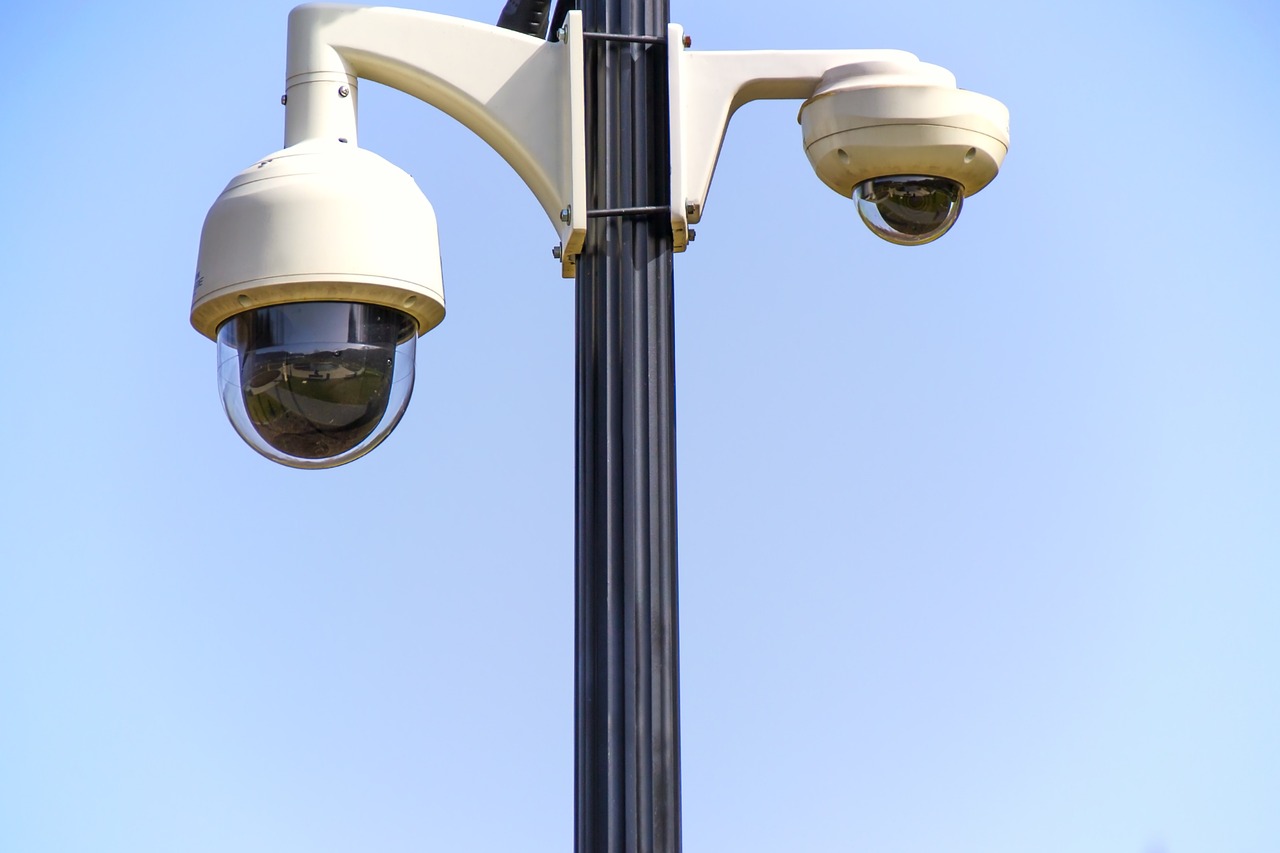
Challenges in Health Monitoring Technologies
The rapid evolution of health monitoring technologies has brought about a myriad of benefits, but it hasn't been without its challenges. As we embrace these innovations, we must also confront the hurdles that stand in the way of their full potential. One of the most pressing issues is data privacy and security. With health data being more digitized than ever, individuals are understandably concerned about who has access to their personal information. Imagine your health metrics, which can reveal intimate details about your lifestyle and well-being, being mishandled or exposed. This fear isn't unfounded, as breaches in data security can lead to identity theft and unauthorized access to sensitive health information.
Moreover, the accuracy of health monitoring devices poses another significant challenge. While many of these gadgets offer real-time insights, the reliability of the data they provide can vary widely. For instance, a smartwatch might report your heart rate, but if it's not calibrated correctly, you could be misled into thinking you're in peak condition when, in reality, you could be at risk. This inconsistency can lead to a false sense of security, where users may neglect to seek medical attention when it's truly needed.
Accessibility is yet another barrier that cannot be overlooked. While health monitoring technologies are becoming more prevalent, there remains a substantial gap in access for underserved populations. Factors such as socioeconomic status, geographic location, and lack of technological literacy can prevent individuals from benefiting from these advancements. For example, a person living in a rural area may not have reliable internet access to utilize telehealth services, leaving them at a disadvantage compared to those in urban settings.
To illustrate these challenges further, consider the following table that summarizes the key issues faced in health monitoring technologies:
| Challenge | Description |
|---|---|
| Data Privacy | Concerns about unauthorized access and data breaches of personal health information. |
| Device Accuracy | Variability in the reliability of data provided by health monitoring devices. |
| Accessibility | Barriers faced by underserved populations in accessing health monitoring technologies. |
In conclusion, while health monitoring technologies hold great promise for improving health outcomes, addressing these challenges is crucial for ensuring that everyone can benefit from these innovations. As developers, healthcare providers, and policymakers work together, they must prioritize solutions that enhance data security, improve device accuracy, and expand access to these life-saving technologies. Only then can we truly harness the power of health monitoring for all.
- What are the main challenges in health monitoring technologies?
Data privacy, device accuracy, and accessibility are the primary challenges faced by health monitoring technologies. - How can data privacy be ensured in health monitoring?
Implementing stronger encryption methods, conducting regular security audits, and adhering to regulatory standards can help safeguard personal health information. - Why is device accuracy important?
Accurate data is crucial for making informed health decisions; inaccurate readings can lead to neglect of necessary medical care. - What can be done to improve accessibility?
Increasing internet access, providing education on technology use, and creating affordable options can help bridge the gap for underserved populations.
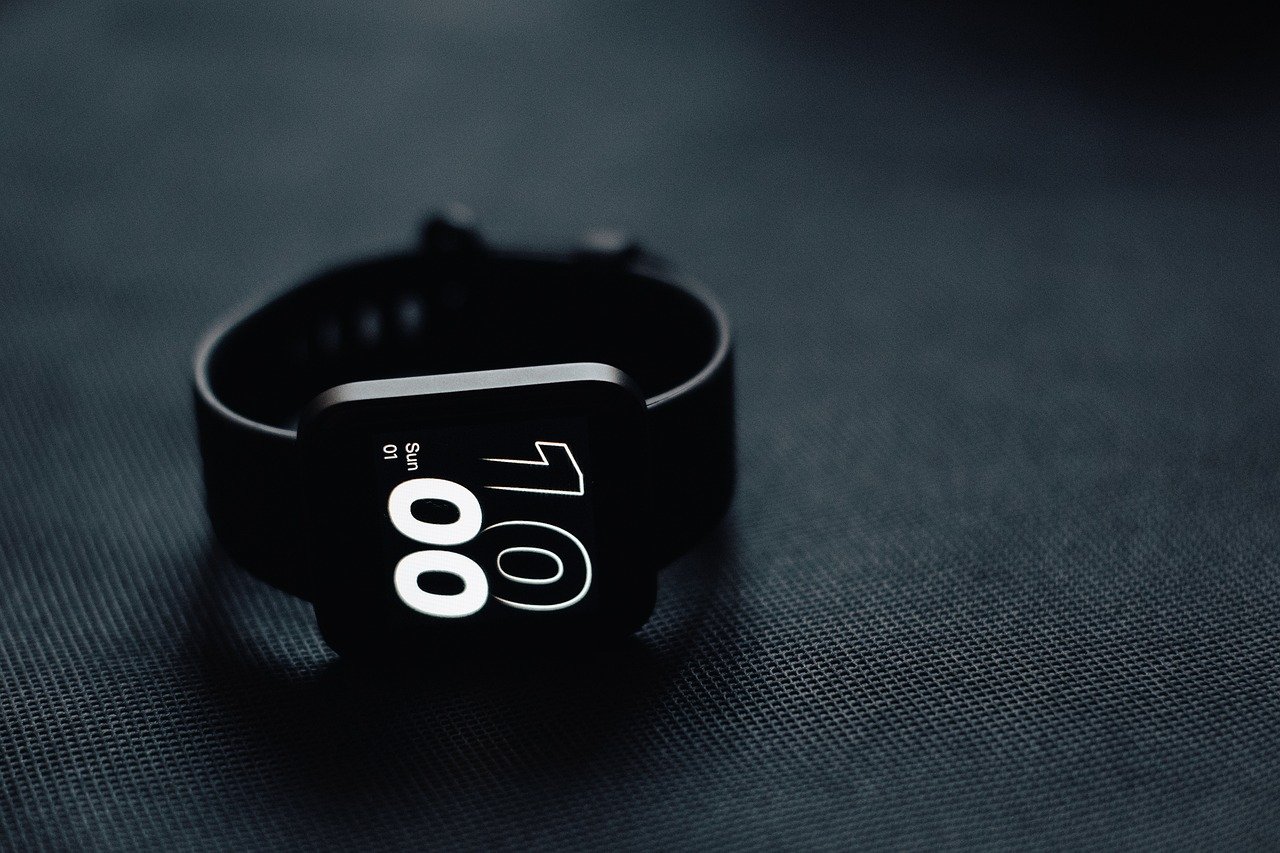
Data Privacy and Security
In today's digital age, where our health is increasingly monitored through various technologies, the issue of has become paramount. Imagine having your personal health data floating around in cyberspace, accessible to anyone with the right tools. Scary, right? With the rise of health monitoring technologies, individuals are now sharing more data than ever before, from heart rates to sleep patterns, and even medication schedules. This creates a treasure trove of information that, if not properly protected, can lead to serious breaches of privacy.
One of the main concerns revolves around the storage and transmission of sensitive health data. When you use wearable devices or mobile health applications, your data is often sent to cloud servers for processing. If these servers are not adequately secured, they can become vulnerable to cyberattacks. For instance, hackers could potentially access your medical history, which could be used for identity theft or even insurance fraud. Therefore, it's crucial that both developers and users prioritize security measures, such as end-to-end encryption and secure access protocols.
Moreover, users often underestimate the importance of reading privacy policies. Many health monitoring devices and apps come with lengthy terms and conditions that most people skip over. However, understanding how your data will be used, shared, and stored is essential. For instance, some companies may sell anonymized data to third parties for research purposes, but others might use it for targeted advertising. The key takeaway here is that you should always be aware of what you're agreeing to when using these technologies.
To further illustrate the importance of data privacy in health monitoring technologies, consider the following table that outlines common privacy concerns:
| Privacy Concern | Description |
|---|---|
| Data Breaches | Unauthorized access to personal health information can lead to identity theft and fraud. |
| Informed Consent | Users may not fully understand how their data will be used or shared. |
| Data Ownership | Questions arise about who owns the data collected by health monitoring devices. |
| Third-Party Access | Many apps share data with third parties, raising concerns about how this data is handled. |
As we advance into an era where health monitoring technologies are prevalent, the responsibility lies with both developers and users to ensure that personal health information remains secure. Developers must implement robust security measures and be transparent about their data practices, while users should take an active role in understanding and managing their privacy settings. After all, your health data is part of your identity, and protecting it is not just a personal choice; it's a fundamental right.
- What should I look for in a health monitoring device regarding data security? Always check for features like data encryption, secure login options, and clear privacy policies.
- Can I delete my health data from these devices or apps? Most devices and apps offer options to delete your data, but it’s important to read the instructions carefully.
- Are my health data safe if I use public Wi-Fi? Using public Wi-Fi can expose your data to risks; it's best to use a VPN or avoid sensitive activities on public networks.

Regulatory and Compliance Issues
The rapid evolution of health monitoring technologies has brought about significant regulatory and compliance challenges that must be addressed to ensure user safety and trust. As these technologies become more integrated into our daily lives, the need for a robust regulatory framework becomes increasingly critical. Regulatory bodies like the FDA (Food and Drug Administration) in the United States and the EMA (European Medicines Agency) in Europe are tasked with overseeing these innovations, ensuring that they meet stringent safety and efficacy standards. But how do these regulations impact the development and deployment of health monitoring technologies?
One of the primary challenges is the classification of devices. Health monitoring technologies range from simple wearable fitness trackers to complex medical devices capable of diagnosing conditions. This variability complicates the regulatory landscape, as each device may fall under different regulatory categories. For instance, a smartwatch that tracks heart rates may only require minimal oversight, while a device that monitors blood glucose levels could be classified as a medical device, necessitating extensive clinical trials and a lengthy approval process.
Moreover, the compliance landscape is further complicated by the need for continuous updates and improvements in technology. As new features are added or existing ones are modified, manufacturers must ensure that they remain compliant with regulatory standards. This ongoing process can be resource-intensive, particularly for startups and smaller companies that may lack the necessary expertise or funding.
Another significant concern is data privacy and security. With the increasing amount of personal health data being collected, regulatory bodies are also focusing on ensuring that this information is protected. The Health Insurance Portability and Accountability Act (HIPAA) in the U.S. sets rules for how personal health information should be handled, but compliance can be tricky, especially for companies that operate in multiple jurisdictions. Regulations like GDPR (General Data Protection Regulation) in Europe add another layer of complexity, requiring companies to implement stringent data protection measures.
To navigate these challenges, companies must adopt a proactive approach to regulatory compliance. This includes staying informed about changes in regulations, investing in compliance training for staff, and developing a robust risk management strategy. By doing so, they can not only ensure compliance but also foster innovation in the healthcare sector. Ultimately, a well-regulated environment will lead to safer products for consumers, enhancing the overall trust in health monitoring technologies.
As we look towards the future, it's clear that while the challenges of regulatory and compliance issues are daunting, they are not insurmountable. Collaboration between technology developers, regulatory agencies, and healthcare providers will be essential in creating a framework that supports innovation while ensuring safety and efficacy. The goal is to strike a balance that allows for the continued advancement of health monitoring technologies without compromising the well-being of users.
- What are the main regulatory bodies overseeing health monitoring technologies?
The FDA in the U.S. and the EMA in Europe are the primary regulatory bodies responsible for overseeing health monitoring technologies. - How do regulations affect the development of new health monitoring devices?
Regulations can dictate the classification of devices, the approval process, and the necessary clinical trials, impacting the time and resources needed for development. - What are the data privacy concerns associated with health monitoring technologies?
With the collection of personal health data, there are significant concerns regarding how this data is stored, shared, and protected, particularly under laws like HIPAA and GDPR. - How can companies ensure compliance with health monitoring regulations?
Companies can ensure compliance by staying informed about regulatory changes, investing in staff training, and developing a robust risk management strategy.
Frequently Asked Questions
- What are health monitoring technologies?
Health monitoring technologies refer to a range of innovative tools and devices designed to track and manage health conditions. These include wearable devices, mobile health applications, and telehealth solutions that help individuals monitor their health in real-time.
- How do wearable devices improve health monitoring?
Wearable devices, such as smartwatches and fitness trackers, provide users with real-time data on vital signs, physical activity, and sleep patterns. This empowers individuals to take control of their health by offering insights that can lead to early detection of potential health issues.
- What are the benefits of continuous health monitoring?
Continuous health monitoring offers several advantages, including early detection of health problems, personalized care tailored to individual needs, and enhanced patient engagement. These factors contribute to better health outcomes and can significantly improve the quality of life.
- Are there any privacy concerns with health monitoring technologies?
Yes, data privacy and security are major concerns in health monitoring technologies. As users share sensitive health information, ensuring that this data is protected from unauthorized access is critical for maintaining trust in these technologies.
- What challenges do health monitoring technologies face?
Despite their benefits, health monitoring technologies encounter challenges such as ensuring the accuracy of devices, addressing data privacy concerns, and improving accessibility for underserved populations. Navigating regulatory and compliance issues also poses significant hurdles.
- How can mobile health applications help users?
Mobile health applications assist users in monitoring their health conditions, managing medications, and facilitating communication with healthcare providers. This connectivity helps users stay informed and engaged in their health management.
- What is the future of health monitoring technologies?
The future of health monitoring technologies looks promising, with advancements in artificial intelligence, machine learning, and sensor technology driving innovation. These developments will likely lead to more accurate, user-friendly, and accessible health monitoring solutions.




